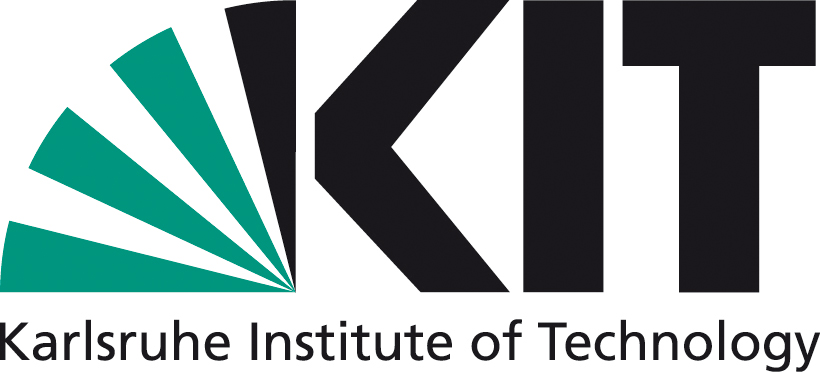Metagenomics approaches in microbial ecology and research for sustainable agriculture
DOI:
https://doi.org/10.14512/tatup.30.2.24Keywords:
basic vs. applied science, metagenomics, microbial ecology, sustainable agricultureAbstract
Technologies such as next generation sequencing (NGS) are transforming research fields at the methodological, conceptual, and organizational level. They open up new possibilities and bring with them new commitments and inherent limitations. We show from a philosophy of science perspective how NGS-based metagenomics has transformed microbial ecology and, with it, parts of agricultural soil science, which integrate ecological approaches with the aim to inform agricultural practices. We reconstruct agricultural science as design science (sensu Niiniluoto) and describe how the possibilities, commitments, and limitations of metagenomics approaches in microbial ecology shape values, situation assessments, and recommendations for interventions of soil microbiology in the context of sustainable agriculture.
References
Ackert, Lloyd (2007): The “Cycle of Life” in ecology. Sergei Vinogradskii’s soil microbiology, 1885–1940. In: Journal of the History of Biology 40 (1), pp. 109–145.
Berg, Gabriele et al. (2020): Microbiome definition re-visited. Old concepts and new challenges. In: Microbiome 8 (1), p. 103.
Bowles, Timothy; Jackson, Louise; Loeher, Malina; Cavagnaro, Timothy (2017): Ecological intensification and arbuscular mycorrhizas. A meta-analysis of tillage and cover crop effects. In: Journal of Applied Ecology 54 (6), pp. 1785–1793.
Desai, Narayan; Antonopoulos, Dion; Gilbert, Jack; Glass, Elizabeth; Meyer, Folker (2012): From genomics to metagenomics. In: Current Opinion in Biotechnology 23 (1), pp. 72–76.
Fierer, Noah (2017): Embracing the unknown. Disentangling the complexities of the soil microbiome. In: Nature Reviews Microbiology 15 (10), pp. 579–590.
Fierer, Noah et al. (2012): Cross-biome metagenomic analyses of soil microbial communities and their functional attributes. In: Proceedings of the National Academy of Sciences National Academy of Sciences 109 (52), pp. 21390–21395.
Funtowicz, Silvio; Ravetz, Jerome (1993): Science for the post-normal age. In: Futures 25 (7), pp. 739–755.
Gibbons, Michael et al. (1994): The new production of knowledge. The dynamics of science and research in contemporary societies. London: SAGE Publications.
Gupta, Shashank et al. (2019): Amplicon sequencing provides more accurate microbiome information in healthy children compared to culturing. In: Communications Biology 2 (1), pp. 1–7.
Haines-Young, Roy; Potschin-Young, Marion (2010): The links between biodiversity, ecosystem service and human well-being. In: David Raffaelli and Christopher Frid (eds.): Ecosystem ecology. A new synthesis. Cambridge, U. K.: Cambridge University Press, pp. 110–139.
Ke, Jing; Wang, Bing; Yoshikuni, Yasuo (2020): Microbiome engineering. Synthetic biology of plant-associated microbiomes in sustainable agriculture. In: Trends in Biotechnology 39 (3), pp. 244–261.
Konopka, Allan (2009): What is microbial community ecology? In: The ISME Journal 3 (11), pp. 1223–1230.
Kulkarni, Pranav; Frommolt, Peter (2017): Challenges in the setup of large-scale Next-Generation Sequencing analysis workflows. In: Computational and Structural Biotechnology Journal 15, pp. 471–477.
Lewis, William; Tahon, Guillaume; Geesink, Patricia; Sousa, Diana; Ettema, Thijs (2021): Innovations to culturing the uncultured microbial majority. In: Nature Reviews Microbiology 19, pp. 1–16.
Martiny, Adam (2019): High proportions of bacteria are culturable across major biomes. In: The ISME Journal 13 (8), pp. 2125–2128.
Massimi, Michela (2018): Four kinds of perspectival truth. In: Philosophy and Phenomenological Research 96 (2), pp. 342–359.
Niiniluoto, Ilkka (1993): The aim and structure of applied research. In: Erkenntnis 38 (1), pp. 1–21.
Noll, Samantha (2016): Agricultural science and values. In: Paul Thompson and David Kaplan (eds.): Encyclopedia of food and agricultural ethics. Dordrecht: Springer Netherlands, pp. 1–6.
O’Malley, Maureen (2014): Philosophy of microbiology. Cambridge, U. K.: Cambridge University Press.
Oviatt, Peter (2020): Soil drugs of the future. The sustainability of BioAg and the repair of arable land. In: Environment and Planning E: Nature and Space (online first).
Pace, Norman; Stahl, David; Lane, David; Olsen, Gary (1986): The analysis of natural microbial populations by ribosomal RNA sequences. In: Kevin Marshall (ed.): Advances in microbial ecology. Boston, MA: Springer US, pp. 1–55.
Pereira, Rui.; Peplies, Jörg; Brettar, Ingrid; Höfle, Manfred (2017): Development of a genus-specific next generation sequencing approach for sensitive and quantitative determination of the Legionella microbiome in freshwater systems. In: BMC Microbiology 17, p. 79.
Prosser, James (2020): Putting science back into microbial ecology. A question of approach. In: Philosophical Transactions of the Royal Society B: Biological Sciences, 375 (1798), p. 20190240.
Puig de la Bellacasa, Maria (2015): Making time for soil. Technoscientific futurity and the pace of care. In: Social Studies of Science 45 (5), pp. 691–716.
Rheinberger, Hans-Jörg (1997): Toward a history of epistemic things. Synthesizing proteins in the test tube. Stanford, CA: Stanford University Press.
Schloter, Michael; Nannipieri, Paolo; Sørensen, Søren; van Elsas, Jan (2018): Microbial indicators for soil quality. In: Biology and Fertility of Soils 54 (1), pp. 1–10.
Slatko, Barton; Gardner, Andrew; Ausubel, Frederick (2018): Overview of Next-Generation Sequencing technologies. In: Current Protocols in Molecular Biology 122 (1), p. e59.
Staley, James; Konopka, Allan (1985): Measurement of in situ activities of nonphotosynthetic microorganisms in aquatic and terrestrial habitats. In: Annual Review of Microbiology, 39 (1), pp. 321–346.
Stokes, Donald (1997): Pasteur’s quadrant. Basic science and technological innovation. Washington, DC: Brookings Institution Press.
Thompson, Paul (2016): The many meanings of sustainability. A competing paradigms approach. In: Steven Moore (ed.): Pragmatic sustainability. Dispositions for critical adaptation. London: Routledge, pp. 16–28.
Woese, Carl; Gutell, Robin; Gupta, Ramesh; Noller, Harry (1983): Detailed analysis of the higher-order structure of 16S-like ribosomal ribonucleic acids. In: Microbiological Reviews 47 (4), pp. 621–669.
Published
How to Cite
Issue
Section
License
Copyright (c) 2021 Robert Meunier, Saliha Bayır

This work is licensed under a Creative Commons Attribution 4.0 International License.








